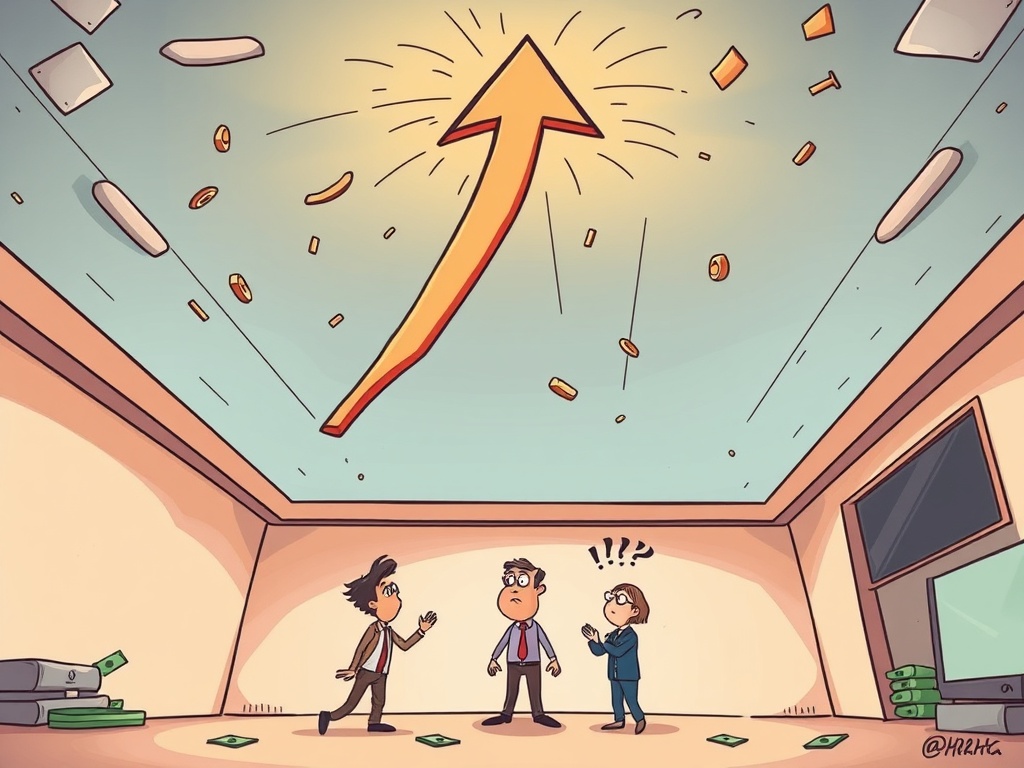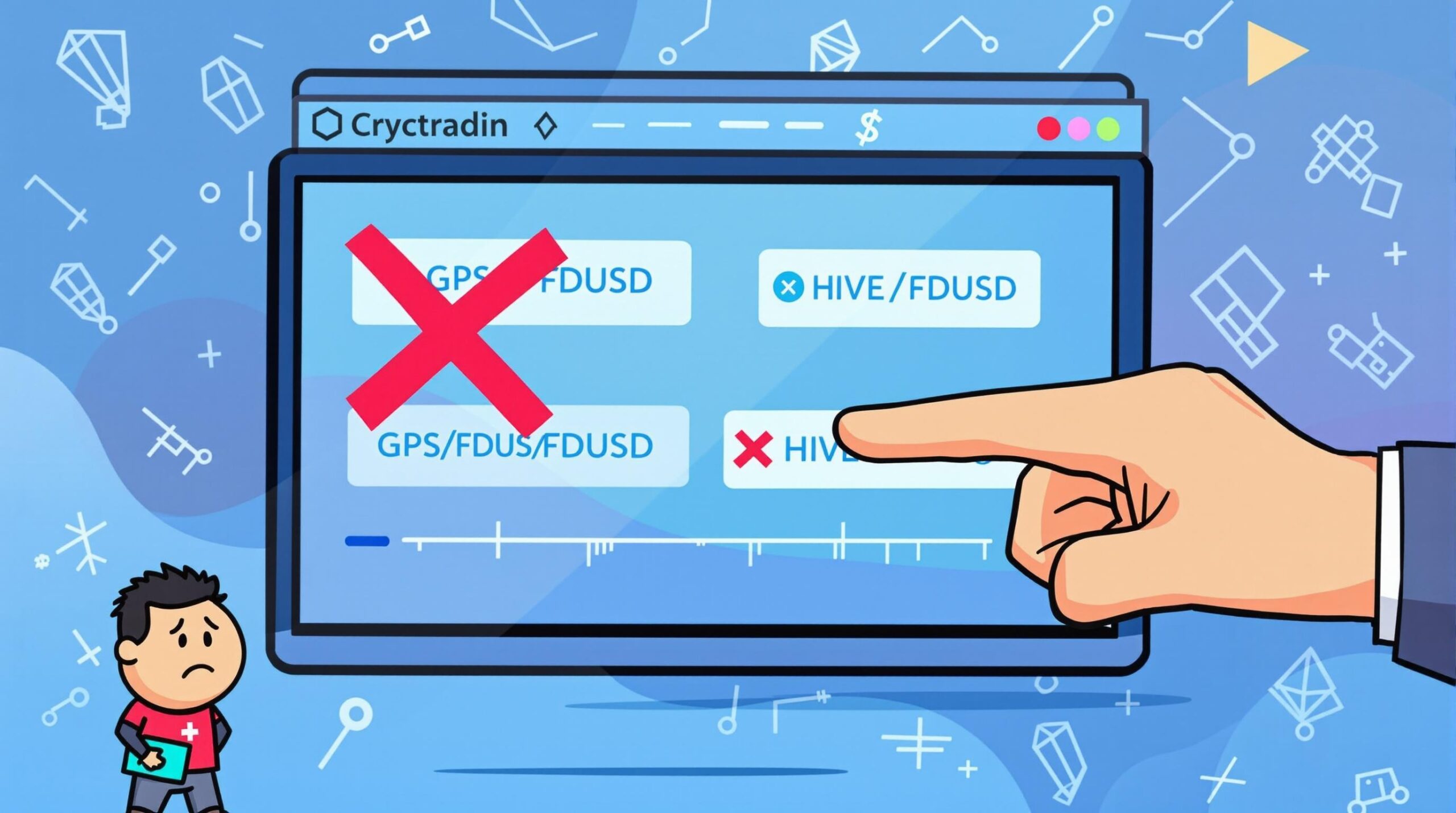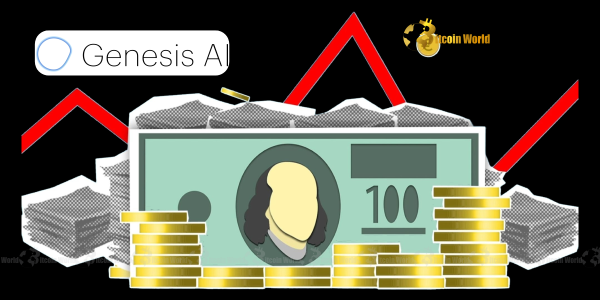BitcoinWorld

Alarming PPI Rise: US Inflationary Pressures Mount Unexpectedly
The financial world recently experienced a significant jolt. The U.S. Bureau of Labor Statistics revealed an alarming PPI rise for July, far exceeding initial forecasts. This unexpected surge immediately raised eyebrows and amplified concerns about escalating US inflation.
What Does the Surprising PPI Rise Mean for You?
The Producer Price Index (PPI) tracks changes in selling prices received by domestic producers. Think of it as a key indicator of wholesale inflation. This July, the PPI climbed a surprising 0.9% month-over-month. This figure dramatically surpassed the modest 0.2% forecast, catching many off guard and defying prior market expectations.
Even more concerning, the Core PPI, which excludes volatile food and energy prices, also mirrored this 0.9% increase. This was well above its 0.2% prediction, indicating broad-based price pressures across various sectors. Historically, a significant Producer Price Index increase often foreshadows future consumer price hikes, impacting the Consumer Price Index (CPI) with a delay.
Why Did the Producer Price Index Jump So High?
Several factors likely contributed to this unexpected jump. Global supply chain disruptions continue to play a role, making it more expensive for producers to source raw materials and components. This persistent challenge directly contributes to the PPI rise.
Robust consumer demand in certain sectors might also empower businesses to pass on higher costs. Furthermore, the persistent tightness in the labor market could lead to increased wage costs. Producers then incorporate these costs into their pricing, further fueling the inflationary trend.
How Does This Economic Data Impact Markets?
Such robust economic data can significantly influence market sentiment. Investors often view higher PPI figures as a precursor to more aggressive monetary policy from the Federal Reserve. This diverges sharply from previous market expectations for a potential pause in rate hikes.
Concerns about persistent US inflation could lead to expectations of higher interest rates. These rates can impact asset valuations across the board, including traditional equities and cryptocurrencies. A strong PPI suggests the Fed’s battle against inflation is far from over, potentially leading to continued volatility.
Traders and analysts closely watch these numbers. They use this critical economic data to gauge broader economic health and anticipate central bank actions. The Producer Price Index directly feeds into their models for future market movements.
Navigating Inflationary Pressures: What’s Next for the Economy?
The July PPI rise adds another layer of complexity to the economic outlook. Policymakers will scrutinize this data carefully as they consider future interest rate decisions. This unexpected development challenges earlier market expectations of a smoother path towards disinflation.
For consumers, this could translate to higher prices for goods and services in the coming months. Producers will eventually pass on their increased costs, impacting household budgets. For investors, understanding the implications of this economic data is crucial.
Diversifying portfolios and considering inflation-hedging assets might become more appealing strategies. The market’s swift reaction to this surprising news highlights its sensitivity to any signs of persistent inflationary trends. Be prepared for continued vigilance from economic observers.
Conclusion: The unexpected 0.9% PPI rise in July serves as a stark reminder that inflationary pressures remain a significant challenge for the U.S. economy. This key piece of economic data signals potential future price increases for consumers and will undoubtedly factor into the Federal Reserve’s next steps. Staying informed about these economic indicators is vital for anyone navigating the complex financial landscape.
Frequently Asked Questions (FAQs)
- What is the Producer Price Index (PPI)?
The Producer Price Index (PPI) measures the average change over time in the selling prices received by domestic producers for their output. It reflects wholesale inflation. - How does PPI differ from CPI?
PPI tracks prices from the perspective of the seller (producers), while the Consumer Price Index (CPI) tracks prices from the perspective of the buyer (consumers). PPI often acts as a leading indicator for CPI. - Why is the July PPI rise significant?
The July PPI rise was significantly higher than market expectations, indicating stronger-than-anticipated inflationary pressures at the wholesale level, which could soon impact consumer prices. - How might the Federal Reserve react to this PPI data?
The Federal Reserve closely monitors economic data like PPI. A higher-than-expected PPI could reinforce the need for continued hawkish monetary policy, including potential interest rate hikes, to combat persistent US inflation. - What impact could this have on cryptocurrency markets?
Higher inflation and potential interest rate hikes can make riskier assets like cryptocurrencies less attractive. Investors might move towards less volatile assets, leading to increased volatility or downward pressure on crypto prices.
If you found this analysis insightful, consider sharing it with your network! Stay ahead of the curve by informing others about crucial economic developments impacting global markets.
To learn more about the latest economic data trends, explore our article on key developments shaping the US economy’s price action.
This post Alarming PPI Rise: US Inflationary Pressures Mount Unexpectedly first appeared on BitcoinWorld and is written by Editorial Team





